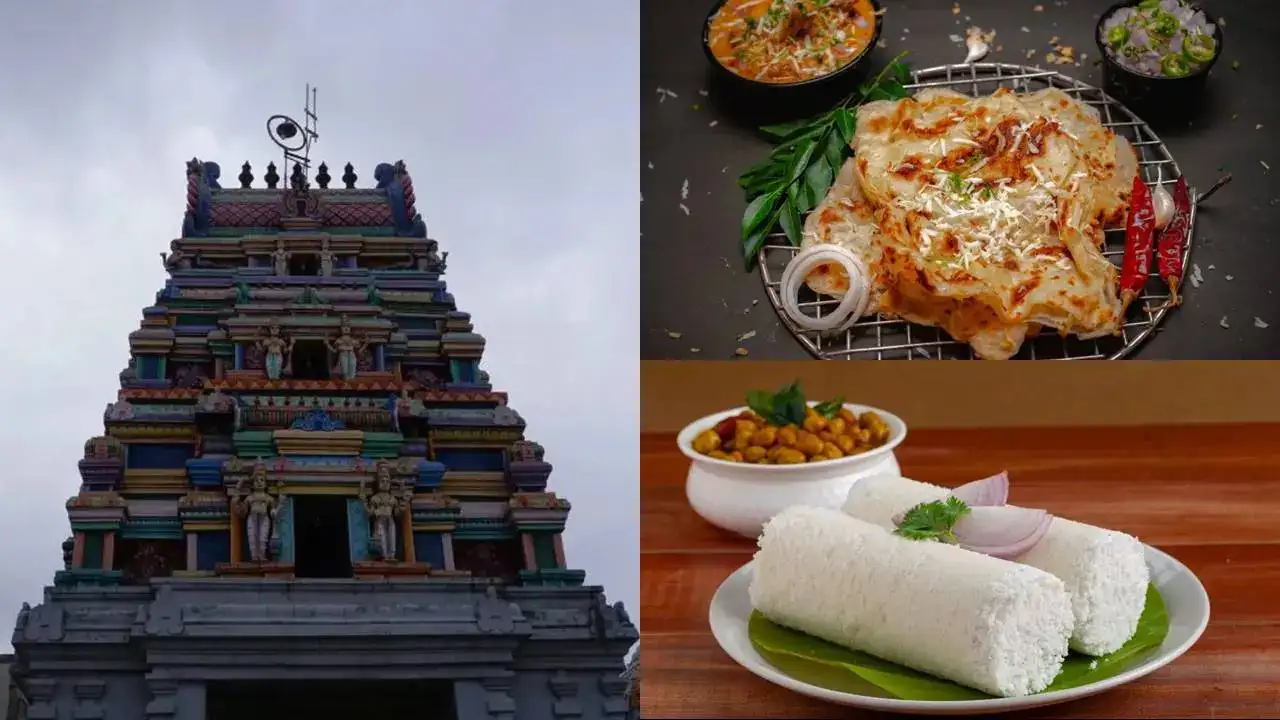Kodaikanal Famous Food Guide: Discover 5 Authentic Dishes – From Flaky Parottas To Colonial-Style Roast Lamb – That Capture The Hill Station’s True Flavour
By Tn Lifestyle Desk
Copyright timesnownews

Imagine this: you’re gliding up the serpentine roads of the Palani Hills, windows down, the cool, pine-scented breeze making your hair dance, and the clouds practically low enough to touch. Kodaikanal, that old-school hill station, slowly unveils itself—stone cottages, flower-lined lanes, and a lake that looks like it’s been airbrushed by nature itself. But while your eyes are drinking in the scenery, your stomach starts asking awkward questions. Because here’s the thing nobody puts in the brochures: Kodaikanal doesn’t just look good, it tastes extraordinary. The town’s food scene is a quiet yet glorious tapestry of Tamil warmth, Kerala spices and a surprising dash of colonial nostalgia. Think slow fires, fresh produce, herbs that actually smell alive and meat that’s cooked with the patience of a monsoon. Hungry yet? What Makes Kodaikanal’s Food So Distinct? Kodaikanal’s kitchens are an echo chamber of its geography and history. On one side you have earthy Tamil staples—rice, lentils, parottas—on the other, the gentle coconut-milk comforts of Kerala, and somewhere in the middle, the Anglo-Indian hangover of roast meats, puddings and bakery treats. Fun fact: the hill station was once a retreat for British missionaries and planters. They introduced European cooking techniques, which, over time, got spliced into local recipes. So your peppery chicken curry might share a table with a crusty loaf of bread, and no one bats an eyelid. Add to that a market brimming with baby carrots, glossy beans, wild mushrooms and aromatic peppercorns harvested from the surrounding slopes, and you’ve got yourself a menu that feels both homely and a bit adventurous. 1. Parotta with Salna – The Messy Street-Side Star If flaky layers had a national award, Kodaikanal parotta would win it hands down. These golden discs are kneaded, flipped, stretched and smacked on a hot tawa until they develop a hypnotic swirl. They’re served with salna—a peppery, soupy curry that’s somehow light and rich at once. Walk past a street stall in the chilly evening air and you’ll hear the rhythmic “clap-clap” of dough hitting metal. Tear off a steaming piece, dunk it into salna, and watch as the spice and fat warm you from the inside out. It’s chaotic, a bit greasy, and utterly unmissable. 2. Chettinad Chicken – A Firecracker on a Plate Coming to the Western Ghats without eating Chettinad Chicken is a bit like visiting London and skipping tea. It’s bold, complex and unapologetically spicy. In Kodaikanal, the mountain chill only heightens the experience. The chicken is slow-cooked in a masala of dried red chillies, black pepper, coconut, fennel seeds and curry leaves until it becomes dark, fragrant and deeply satisfying. Pair it with parotta if you’re feeling indulgent, or with plain rice for a more old-school affair. Either way, you’ll need a second helping. 3. Roast Lamb – A Colonial Echo Hidden in Kodaikanal’s older cafés and Anglo-Indian kitchens is a dish that feels like time travel: roast lamb. There’s nothing overly cheffy here—no fussy plating or elaborate sauces. Just rustic cuts of lamb marinated with herbs and roasted slowly until the fat crisps and the meat stays juicy. It often comes with roasted potatoes and maybe a drizzle of pan gravy. Sit by a crackling fireplace, jazz humming in the background, and you’ll swear you’ve stumbled into a Graham Greene novel. 4. Vegetable Stew – Gentle, Fragrant Comfort For those who like their food mellow yet memorable, Kodaikanal’s vegetable stew is a revelation. Borrowed from Kerala but reimagined with local produce, it’s a coconut-milk based curry simmered with carrots, beans, potatoes and, if the chef’s feeling generous, wild mushrooms. It’s usually served with appam—those delicate, lacy rice pancakes—or simple steamed rice. No aggressive heat, no palate burn; just soft, fragrant warmth perfect for misty afternoons when the hills are wrapped in grey. 5. Puttu with Kadala Curry – Breakfast of the Hills Rise early in Kodaikanal and you’ll be rewarded with a breakfast that’s part ritual, part delight: puttu with kadala curry. Puttu is steamed rice flour and coconut, packed into a cylindrical mould until it’s light, fluffy and a little nutty. Kadala curry is its spicy soulmate, made with black chickpeas, roasted spices and a touch of coconut. The contrast—soft puttu and punchy curry—will wake you up faster than any espresso. It’s a dish born of the region’s Malayali influence, but it’s now as much a part of Kodaikanal mornings as mist and pine. Why You’ll Remember Kodaikanal by Its Food By the time you leave Kodaikanal, the memories will be more than postcard views. They’ll be sensory: the sound of dough being flipped, the sting of black pepper in your throat, the sweetness of coconut milk, the smell of roasting meat in cold air. Food here isn’t just sustenance; it’s the quickest way into the soul of the hills. So, next time you find yourself winding up those misty roads, don’t just pack your walking shoes. Bring an appetite. Kodaikanal will feed you stories as much as it feeds you meals—and both will stay with you long after the fog has lifted.



